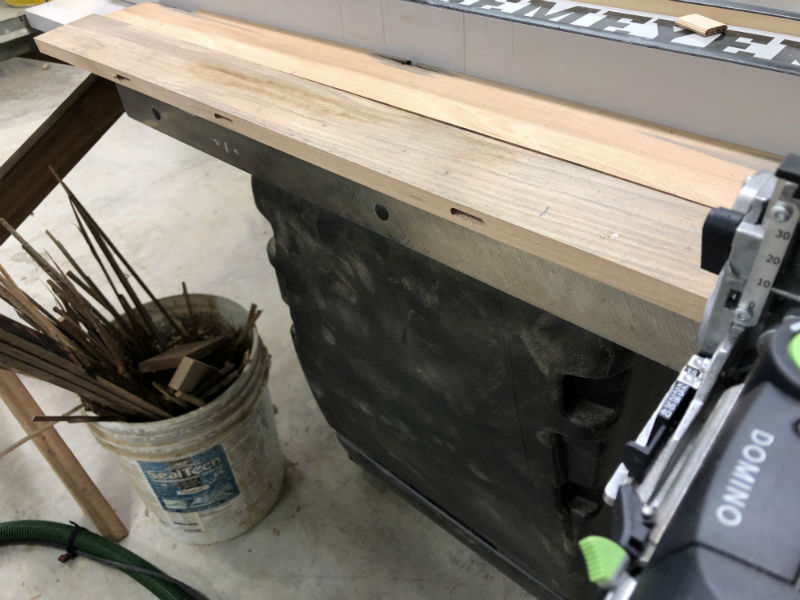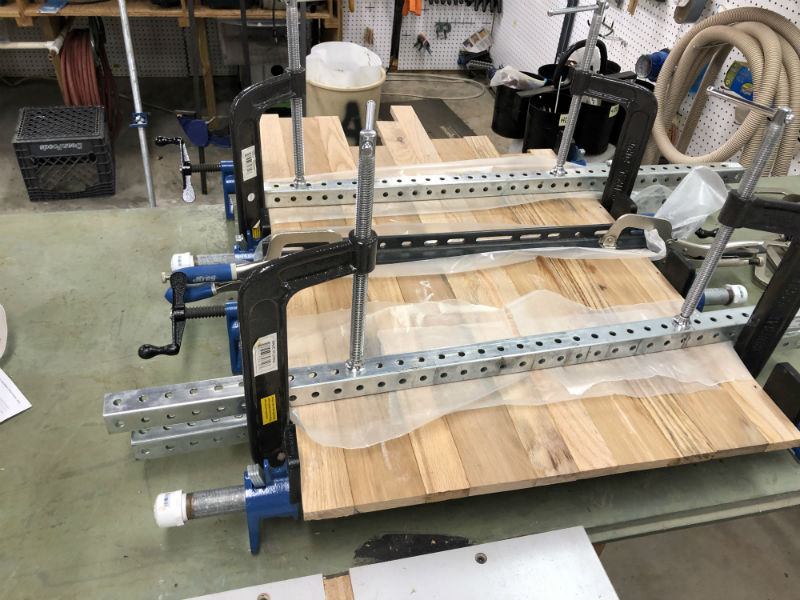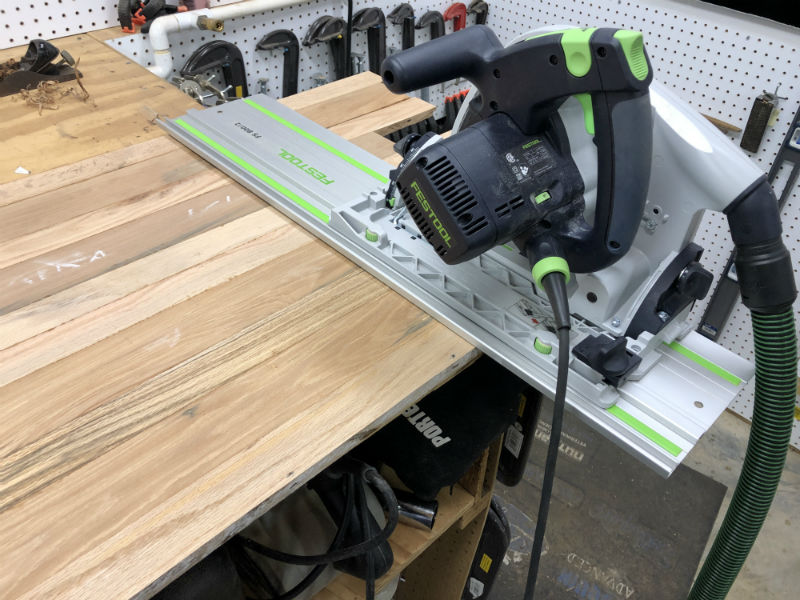Welcome to “Tips From Sticks-In-The-Mud Woodshop.” I am a hobbyist who loves woodworking and writing for those who also love the craft. I have found some ways to accomplish tasks in the workshop that might be helpful to you, and I enjoy hearing your own problem-solving ideas. Please share them in the COMMENTS section of each tip. If, in the process, I can also make you laugh, I have achieved 100% of my goals.
I’m continuing my panel making project, which I’ve discussed in the last two month’s of Tips from Sticks in the Mud (Part 1 and Part 2), and we’re now down to the wire. I hope. I had to go through a lot of boards before I got enough to make the panel lie reasonably flat. Some were twisted, some were bent, warping was rampant. Some junctions required extra Dominos to pull the edges into alignment with each other.
I know most “experts” say that biscuits and Dominos don’t add any strength to an edge joint. I’m no engineer, so I’m not going to argue the point. Nor am I going to test joints with and without additions. However, they certainly give me the feeling that the joint is stronger, and I’ve glued up enough crooked, used wood to know that alignment is far superior when a loose tenon inside is pulling crookedness in the direction of straight. And, the better the initial alignment is, the less sanding, scraping and planing you will have to do to give the smooth surface you desire.
This panel started out about 25″ by 28″. In the 28″ direction, each joint got 4-5mm Dominos, and two joints got two extras. The lowest height setting put the Domino in the middle of the thickness, which I kept thin because Brenda wants it as light as possible.
Before Dominos, each edge was treated to a pass with the Forrest Woodworker II, as the coarse-toothed blade combined with all that crookedness left some burning on the edges. A few edges required a light pass on the jointer to true them up.

After gluing, I used some cauls to keep the panels as flat as possible.

While I had one end of the boards mostly square and even with each other’s ends, I let the other end run wild. There is no reason to sand all of that unused part, and nothing is reliably square yet, so I used the TS 55 REQ Track Saw to cut off the excess.

And, that’s where I got stuck. I came home early from work one day specifically to finish this task. Then, I got a text from a dear friend from church, “How are you coming along with the bench you were modifying for me?”
I’d already warned him that I had two jobs ahead of the bench. This was one of them, the other was putting new springs under our boat trailer because it was immobilized in its spot in the garage, and nothing could get through that area.
Then, I thought, “He’s been such a good friend.” I finished his bench modification, used the drill press to make 56 screw holes in the brackets he was using on them, and got everything delivered.
He was ecstatic.
I was able to cut off those boards with the TS 55, and begin sanding when I returned, then it was off to supper, kiss my beautiful bride, and bedtime. After irrigating, of course.
With any luck, I can be finished by next month and have a final product for you to look at. Meanwhile, there’s work, and, this week, Brenda and I are making a trip to the Seventh Annual American Eagle Foundation Chatters’ Reunion. While there, I hope to climb Mt. LeConte again. I’m up for it, but there is an 80% chance of rain on the one and only day I can hike. I’ll update you on that next month, too. And, by the way, yes, the boat trailer repair is finished. It has new springs, new wheel bearings and even new Bearing Buddies.
Now, if only I had time to go fishing.
Jim Randolph is a veterinarian in Long Beach, Mississippi. His earlier careers as lawn mower, dairy farmer, automobile mechanic, microwave communications electronics instructor and journeyman carpenter all influence his approach to woodworking. His favorite projects are furniture built for his wife, Brenda, and for their children and grandchildren. His and Brenda’s home, nicknamed Sticks-In-The-Mud, is built on pilings (sticks) near the wetlands (mud) on a bayou off Jourdan River. His shop is in the lower level of their home.Questions and comments on woodworking may be written below in the comments section. Questions about pet care should be directed to his blog on pet care, www.MyPetsDoctor.com. We regret that, because of high volume, not all inquiries can be answered personally.

